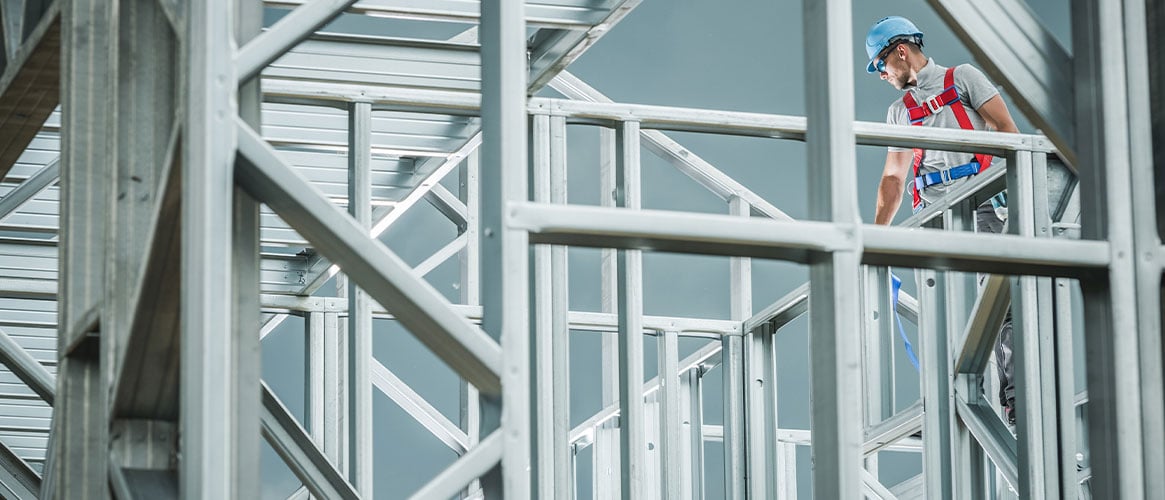Steel workers face serious fall risks while working at heights on skeleton steel structures, particularly the risk of falling. Typically, they work on large civic construction and commercial construction projects such as large buildings, skyscrapers, and bridges. The steel frames they stand on and travel from one work point to another on can be narrow. This limits the room to move and further increases the risk of a fall. A single misstep can be fatal. Fall protection is a must.
Falls are a leading cause of death for construction workers. Today, steel framers most often use personal fall protection devices such harnesses, lanyards, and anchor points when the fall distance is greater than 15 feet, the current trigger height for commercial projects. Compare that to the construction of the Golden Gate Bridge last century, where safety nets were the primary source of fall protection. Safety nets are still used today depending on the needs of a given project. A best practice is to use fall protection below the required thresholds, when practical.
Remember to make sure your workers are protected from impalement hazards. The most common impalement risk at a construction site is rebar—also known as reinforcing steel. Rebar is used to strengthen the concrete foundation of a structure, but when these steel bars are exposed during construction of a foundation, a worker falling to the ground can be impaled. Proper rebar protection includes the use of caps over the rebar and appropriate fall protection.
Fall protection requirements
Connecting. Connecting involves hoisting, placing, and connecting beams or other structural elements on a multi-story structure. For work performed at heights of two stories or 30 feet (whichever is less), a worker’s fall protection system must be tied off to secure anchor points, such as columns, pendant lines attached to the top of columns, or catenary lines.
For work performed at heights between 15 and 30 feet, follow the personal fall protection requirements referenced above.
Shinning. Shinning is climbing vertically up and down columns to connect beams or other structural elements to the columns. This does not require the use of fall protection up to heights of two stories or 30 feet. However, when fall distance exceeds 30 feet, workers must use a personal fall protection system tied off to secure anchor points.
Safety nets. If proper fall protection methods for connecting or shinning tasks are impractical, use safety nets. These nets must extend eight feet beyond the building perimeter and be placed no more than 25 feet below the work surface.
Work other than connecting. For any other work performed at a work point, follow the personal fall protection requirement for work performed at heights more than 15 feet for commercial construction.
Traveling. Use special fall protection methods when workers travel across beams or release slings at building peripheries or interiors. For fall distances greater than 15 feet, and for connecters traveling at two stories or 30 feet, workers must walk the bottom flange of peripheral beams. They may also walk the top surface of securely landed decking bundles or walk the top flange if tied off to catenary lines or other fall protection.
To safeguard your team, follow proper fall protection methods when working and traveling on skeleton steel structures. Safe practices must address specific tasks, work heights, and associated hazards to prevent accidents. Proper methods and training are vital for your workers' safety.
To stay updated on Cal/OSHA regulations, read the full guidelines and protect your workers.
